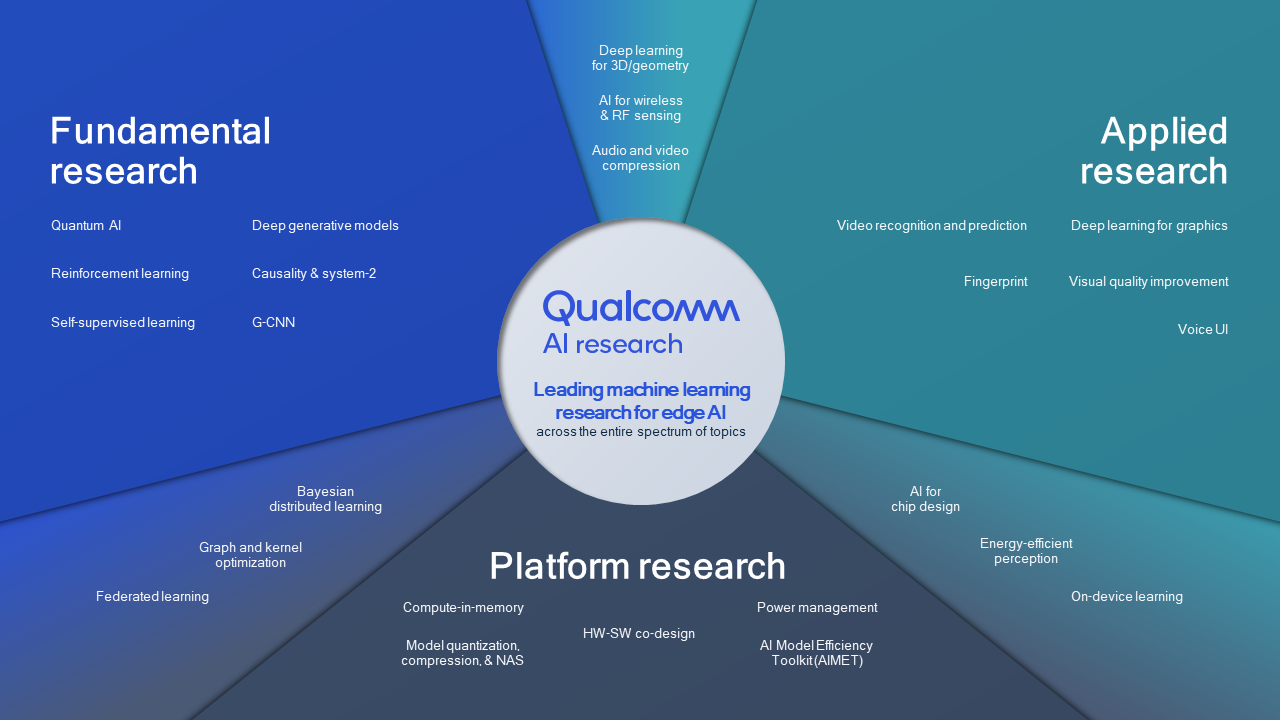This blog post was originally published at Qualcomm’s website. It is reprinted here with the permission of Qualcomm.
Meet the researchers bringing AI to the connected intelligent edge.
Since its founding in 2018, Qualcomm AI Research has developed into a vital resource for the industry, impacting virtually every technology vertical, from wireless to automotive, XR, IoT (Internet of Things), and mobile. Our ever-growing team is based in San Diego, Amsterdam, Seoul, and Markham. I’ve had the pleasure to lead this initiative from the beginning. Even though the scope of our work has scaled, our culture has remained guided by purposeful innovation, passionate execution, and openness. These values ring true across the company.
Purposeful innovation
Our researchers are working on a wide range of topics, spanning from visionary fundamental research to applied research that solves specific challenges in the market today. Virtually every technology can be optimized with machine learning, which is why we are helping to make AI ubiquitous.

With the breadth of topics that our team is working on, it’s important to take a system approach to full-stack AI optimization and leverage the expertise in power efficiency Qualcomm Technologies has built over the years. We’ve asked the researchers what they are most excited to be working on and how they see the future of their work. This is how they replied:
Passionate execution
AI research does not happen in silos but is the result of work being done across teams. Finding the right balance of skills and personalities to produce innovation is key. By bringing together hardware and software experts, researchers, and engineers, the work can enable commercialization at scale. Our team has access to the latest in scientific developments and hardware to work on. The open-door policy means that employees can reach out to each other openly across seniority levels and departments, allowing ideas to be exchanged smoothly. Crucially, researchers are given autonomy around the areas of research they are pursuing. Here’s what our team has to say about successful collaborations in AI research:
Openness
We publish papers every year at top scientific conferences such as NeurIPS, ICLR, ICML, and CVPR. Our team has also published the code for some of their innovative published papers, so that other researchers can replicate the results and build on top of it. This past year Qualcomm AI Research has grown in expertise with the acquisition of TwentyBN and Reservoir Labs. We are proud to be able to relaunch the TwentyBN computer vision datasets Jester and Something Something under the Qualcomm Developer Network umbrella. The contribution to the machine learning community does not end there. This past year we have also been hard at work on releasing new and improved versions of the AI Model Efficiency Toolkit (AIMET) and recently released an AIMET whitepaper describing the quantization techniques that developers can use to successfully implement on-device AI. The work of developers and researchers is also made easier with the AIMET Model Zoo, a collection of pre-trained models and recipes for quantizing 32-bit floating point models to 8-bit integers with little loss in accuracy. Here is what our team has to say about how they see their contribution to the wider AI community:
The benefits of on-device AI
At Qualcomm AI Research, we are inventing, developing, and enabling the commercialization of power-efficient AI. These technologies are becoming increasingly accessible thanks to Qualcomm Technologies, enabling on-device AI with enhanced privacy, lower latency, and lower cost. Having compact neural network models and efficient silicon means technology can take on more tasks successfully from humans, so that they can focus on the things that matter to them. Our AI research team is central in making this possible. And we are hiring:
Dr. Jilei Hou
Vice President, Engineering, Qualcomm Technologies


